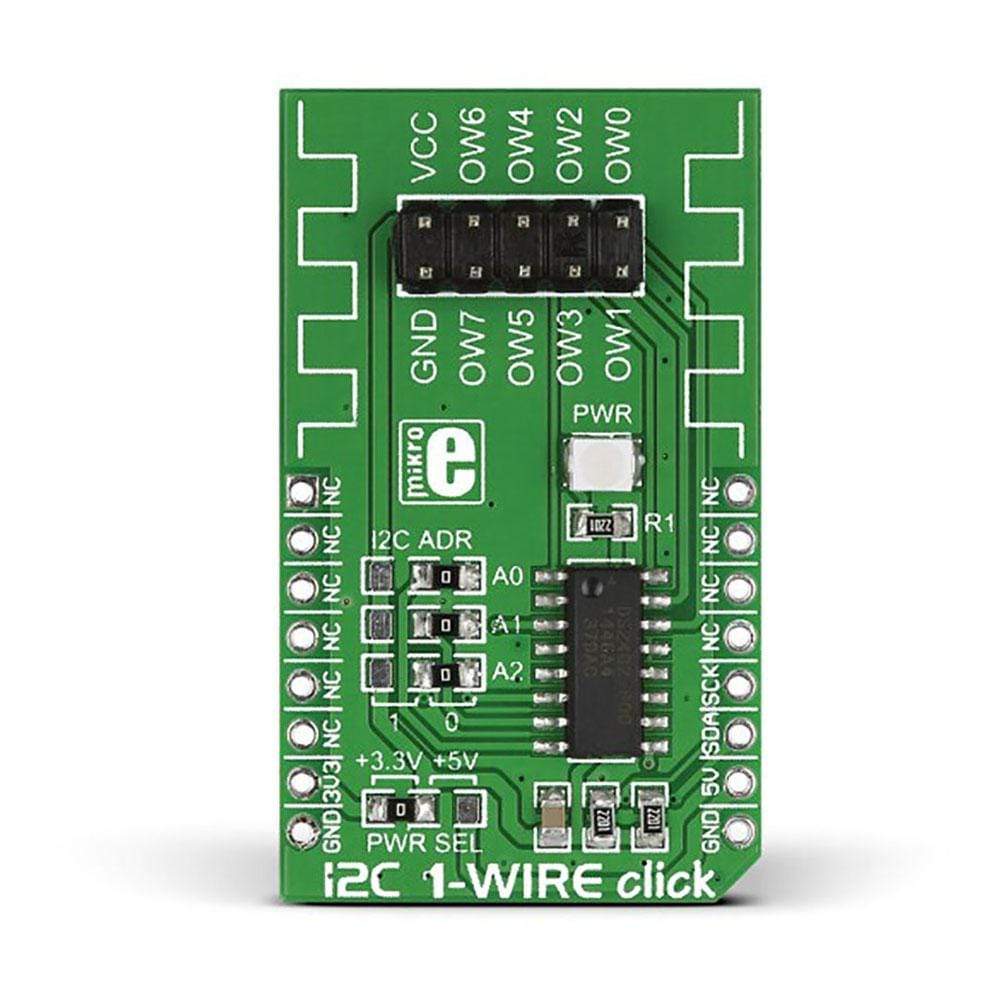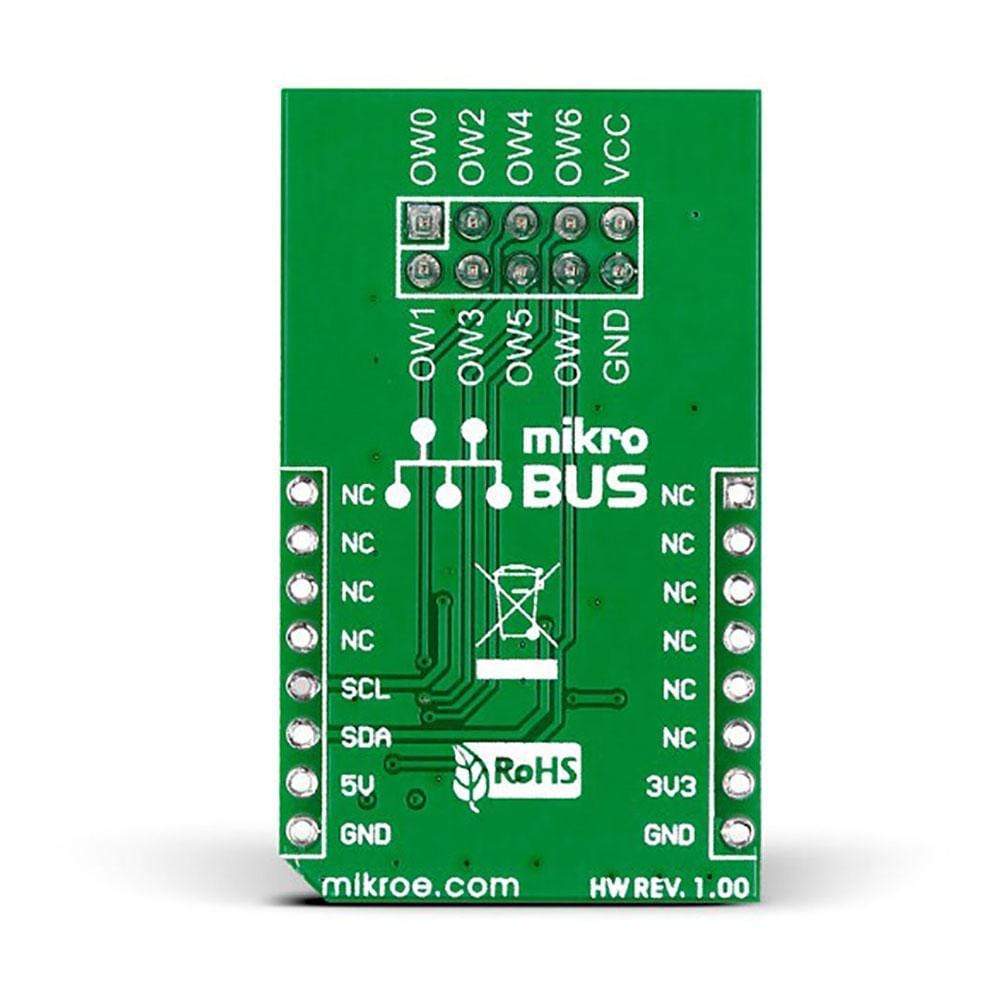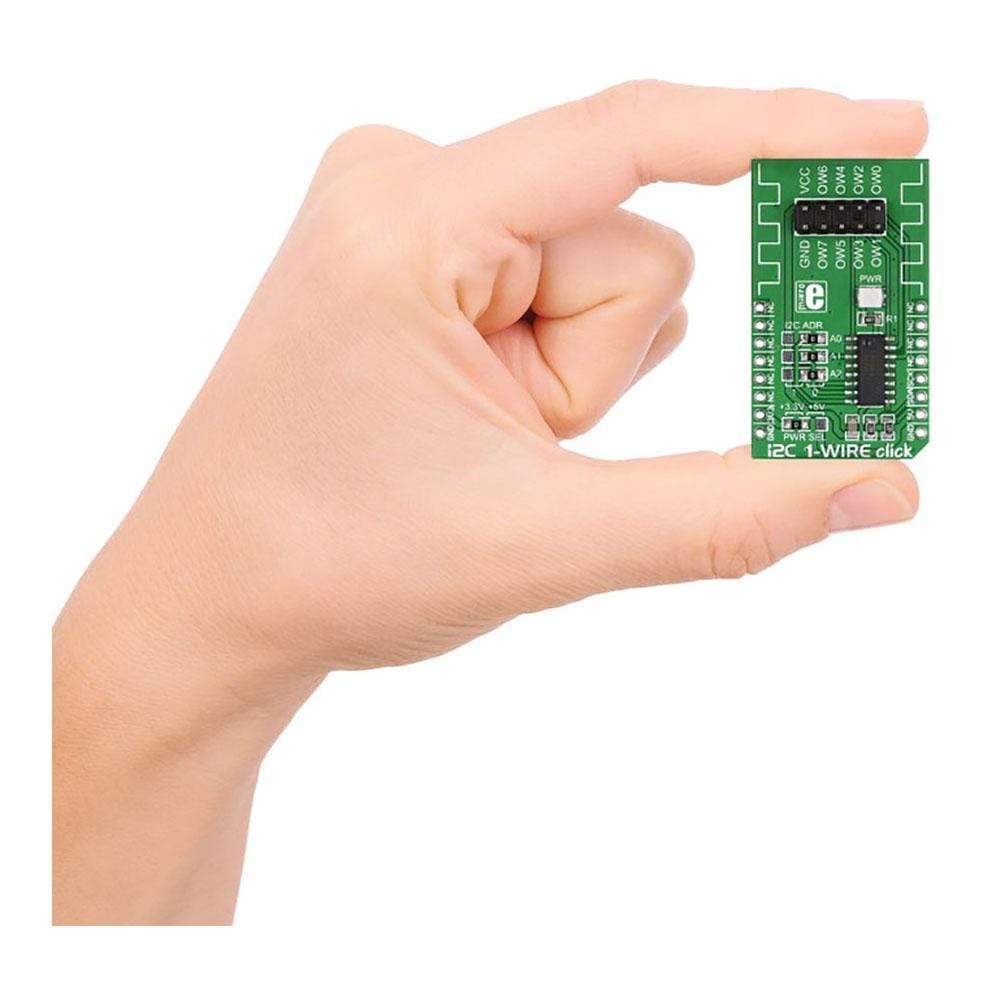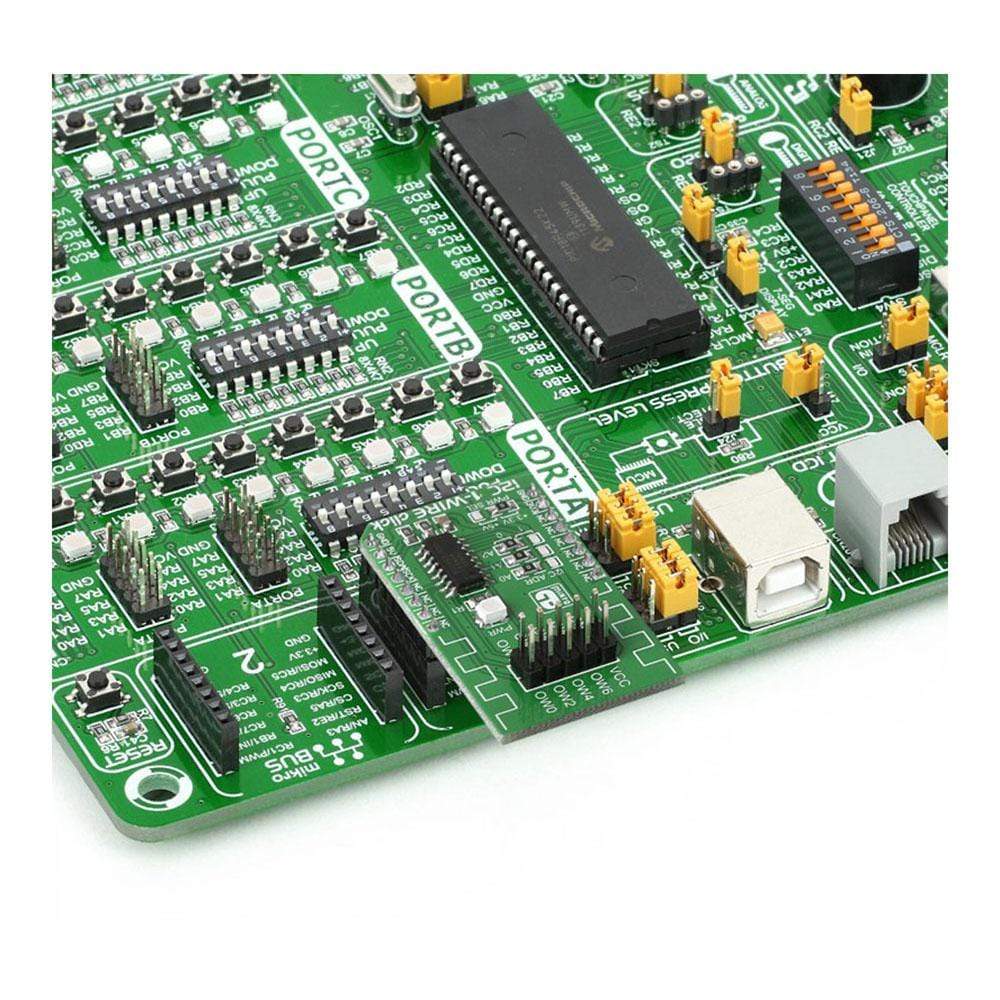



Overview
The I2C 1-Wire Click Board™ carries DS2482-800, a 'bridge device' that performs bidirectional conversions between I2C masters and 1-Wire slave devices.
Downloads
La carte I2C 1-Wire Click Board™ est équipée du DS2482-800, un « périphérique pont » qui effectue des conversions bidirectionnelles entre les maîtres I2C et les périphériques esclaves 1-Wire.
| General Information | |
|---|---|
Part Number (SKU) |
MIKROE-1892
|
Manufacturer |
|
| Physical and Mechanical | |
Weight |
0.026 kg
|
| Other | |
Country of Origin |
|
HS Code Customs Tariff code
|
|
EAN |
8606015076485
|
Warranty |
|
Frequently Asked Questions
Have a Question?
Be the first to ask a question about this.





